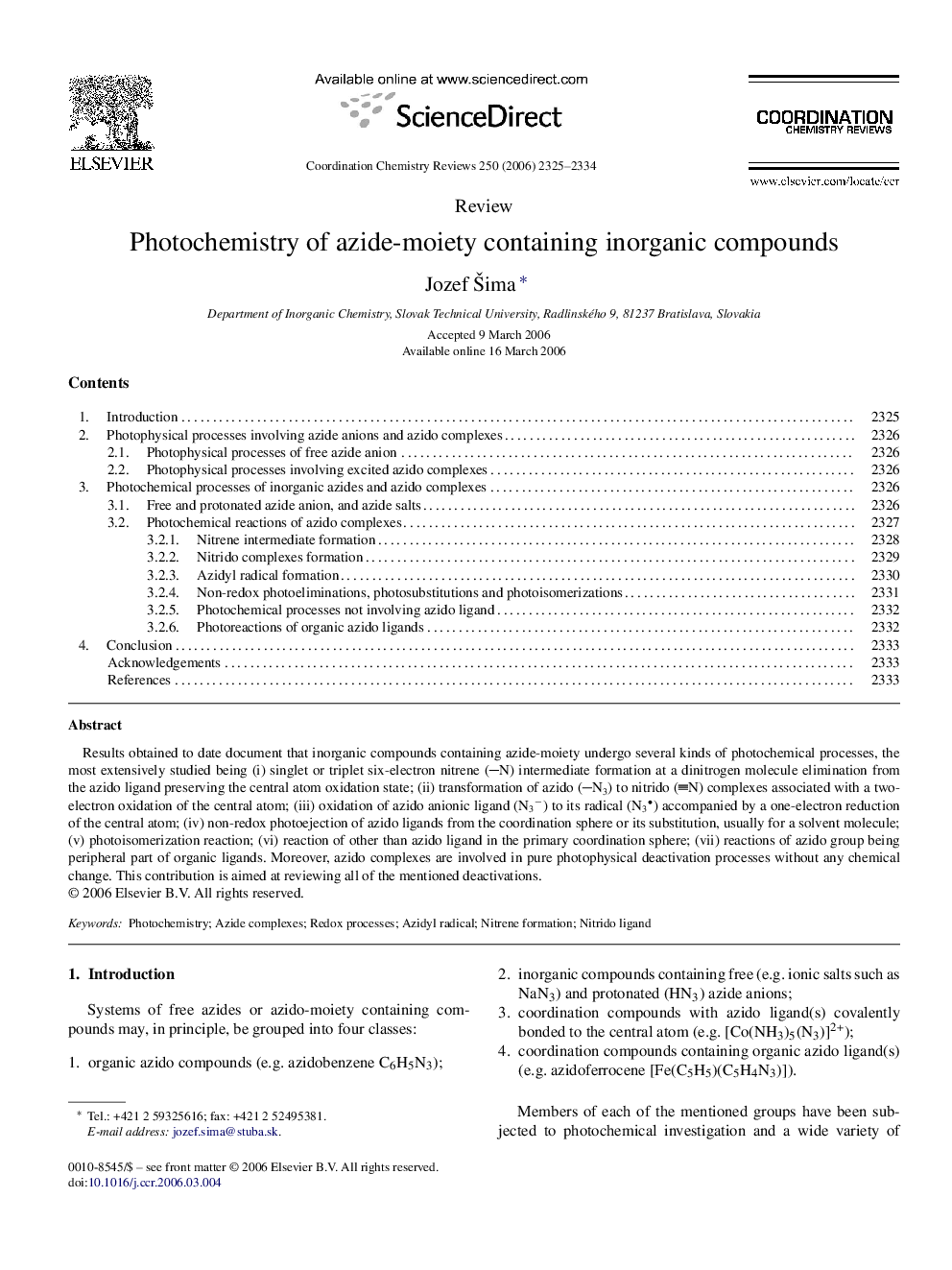| Article ID | Journal | Published Year | Pages | File Type |
|---|---|---|---|---|
| 1300524 | Coordination Chemistry Reviews | 2006 | 10 Pages |
Results obtained to date document that inorganic compounds containing azide-moiety undergo several kinds of photochemical processes, the most extensively studied being (i) singlet or triplet six-electron nitrene (N) intermediate formation at a dinitrogen molecule elimination from the azido ligand preserving the central atom oxidation state; (ii) transformation of azido (N3) to nitrido (N) complexes associated with a two-electron oxidation of the central atom; (iii) oxidation of azido anionic ligand (N3−) to its radical (N3) accompanied by a one-electron reduction of the central atom; (iv) non-redox photoejection of azido ligands from the coordination sphere or its substitution, usually for a solvent molecule; (v) photoisomerization reaction; (vi) reaction of other than azido ligand in the primary coordination sphere; (vii) reactions of azido group being peripheral part of organic ligands. Moreover, azido complexes are involved in pure photophysical deactivation processes without any chemical change. This contribution is aimed at reviewing all of the mentioned deactivations.
